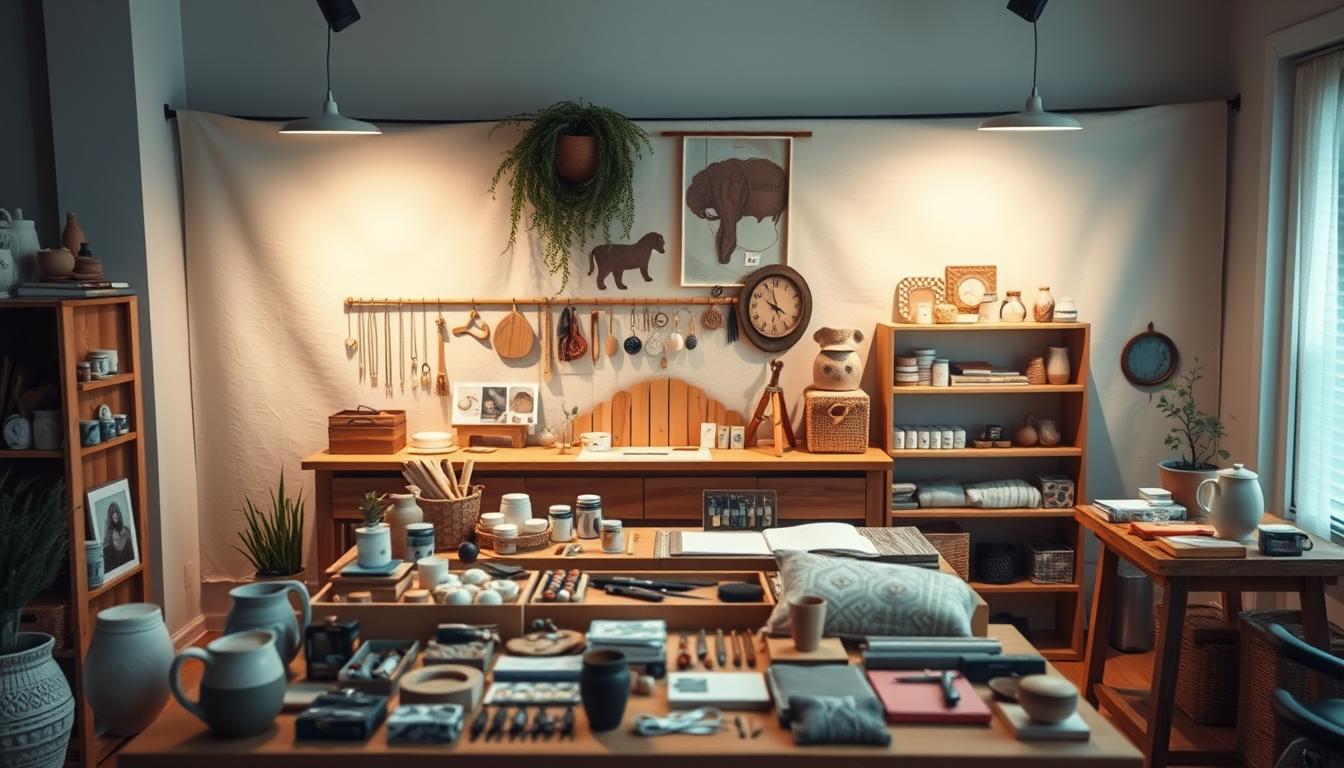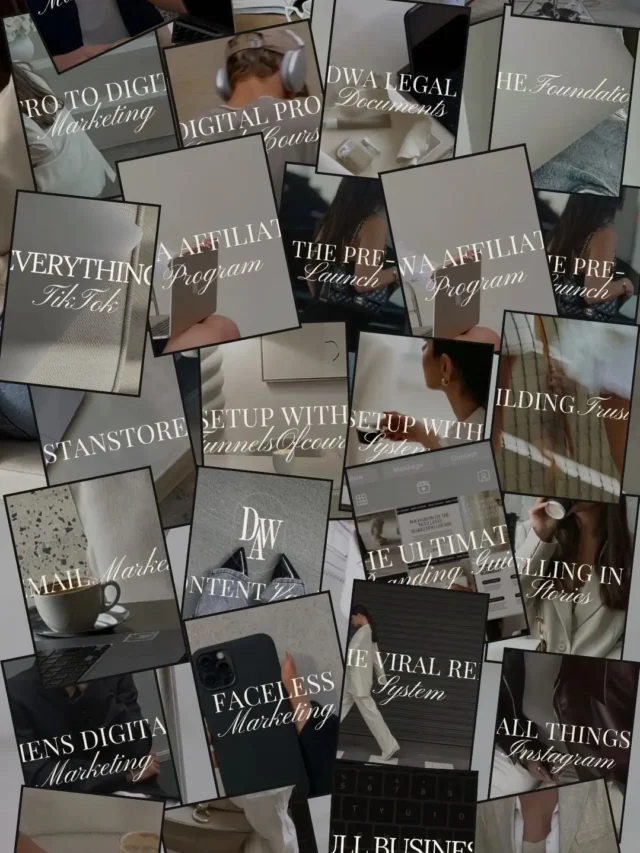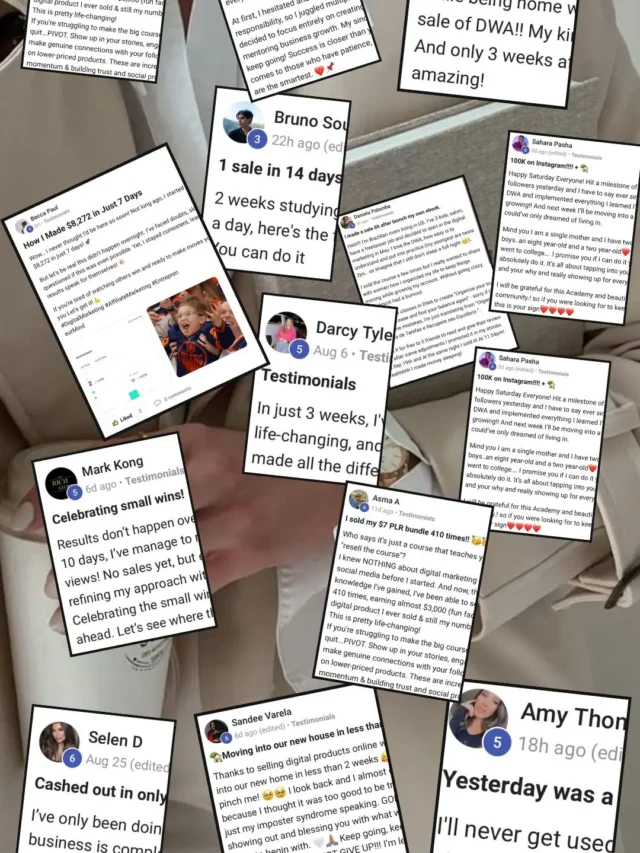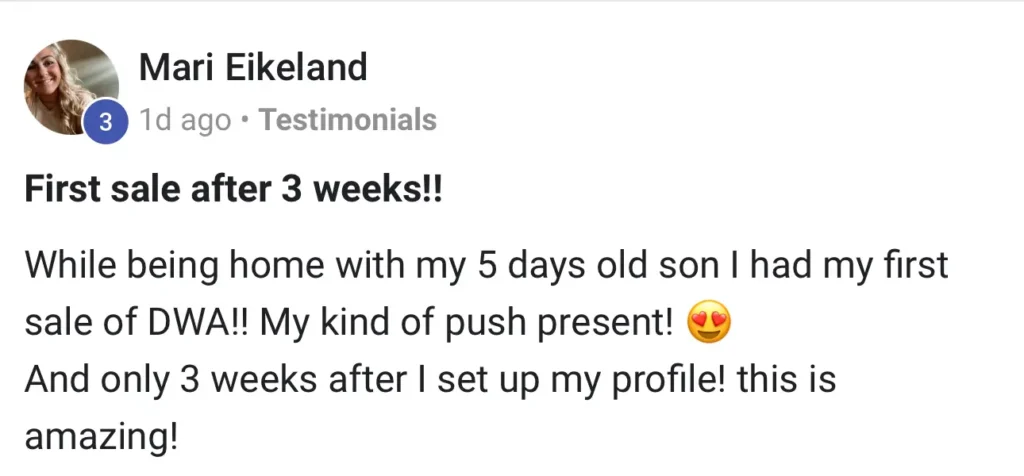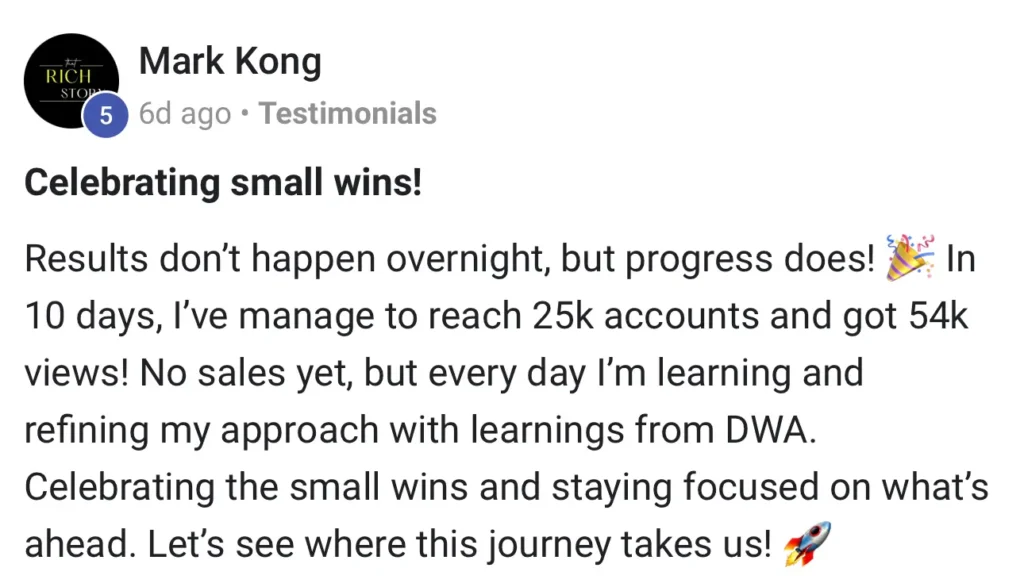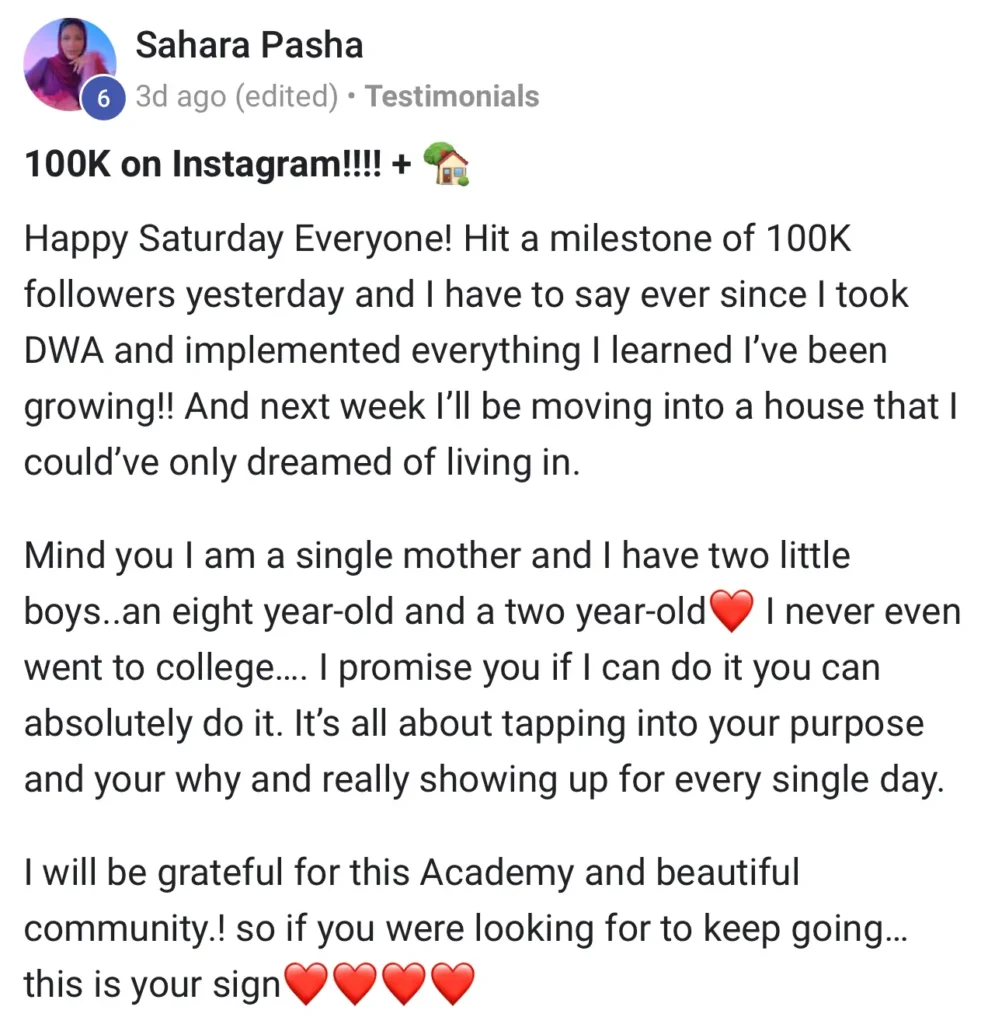What if your hobby could pay your bills?
For millions of creative minds, that’s exactly what Etsy makes possible.
With over 96 million active customers hunting for unique finds, this isn’t just another marketplace.
It’s a thriving ecosystem where vintage teapots and hand knit scarves become someone’s next treasure.
I’ve seen Etsy turn side gigs into full time careers, but here’s the catch: success here isn’t about luck.
It’s about understanding the platform’s quirks.
Unlike big box online retailers, Etsy shoppers crave authenticity.
They want stories, not just products.
That’s why 85% of buyers return for more after their first purchase.
Let’s get real: starting a shop here isn’t instant magic.
You’ll need great photos, clever descriptions, and patience.
But with 5 million sellers already thriving (and counting), the blueprint for winning is clearer than ever.
Whether you’re dusting off your craft supplies or sitting on a vintage goldmine, this guide will help you stand out in the crowd.
If you’re wondering how to sell on Etsy, the key is to treat it like a real business from day one.
Whether you’re selling handmade crafts, digital downloads, or vintage finds, success on Etsy starts with the right strategy and skill set.
But first, before listing your first product, invest in yourself by learning how to create high converting offers, market your shop, and grow consistent income, because selling is more than just uploading pretty products.
That’s why I recommend Digital Wealth Academy (DWA).
While not Etsy specific, DWA teaches you how to:
- Build digital assets and income streams
- Master online marketing strategies that drive real sales
- Understand the foundations of digital business that apply to any platform, including Etsy
- How to promote your Etsy products on multiple social media platforms, diversify your business model, and create multiple income streams
Once you understand how to drive traffic and convert visitors into buyers, your Etsy shop can go from hobby to profitable business faster than most beginners ever expect.
If you’re serious about selling on Etsy, start by building the skills that help you stand out and succeed.
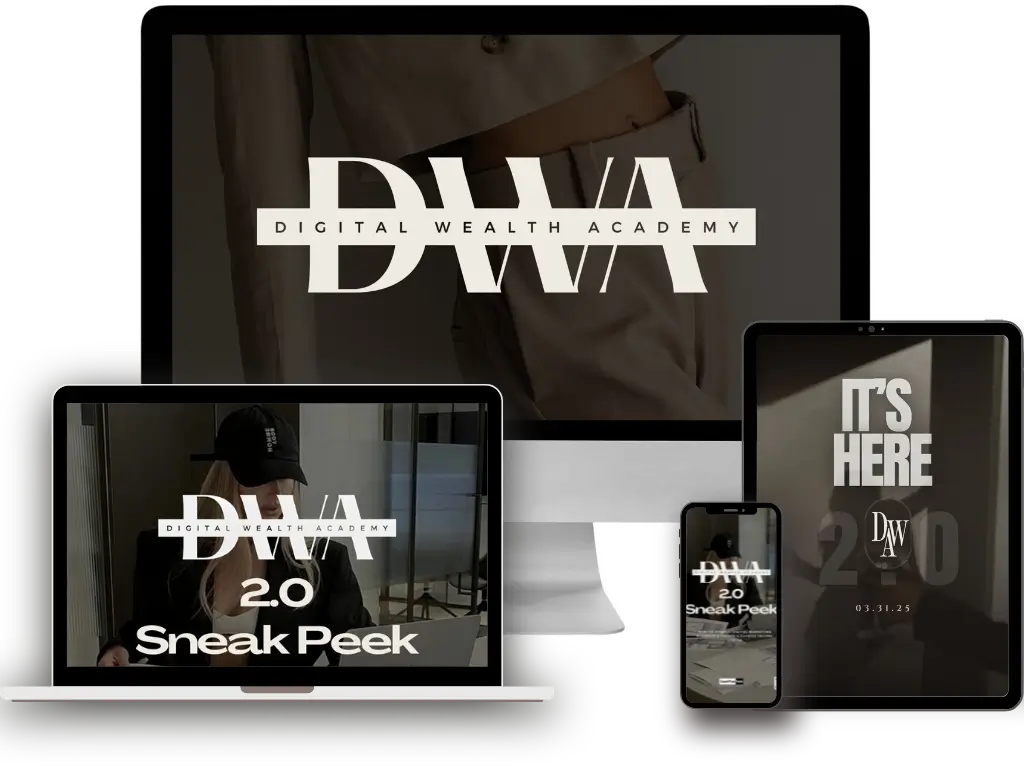
a free beginner’s guide
DWA Sneak Peek
Learn the easiest and fastest way to start or exponentially grow your existing business.
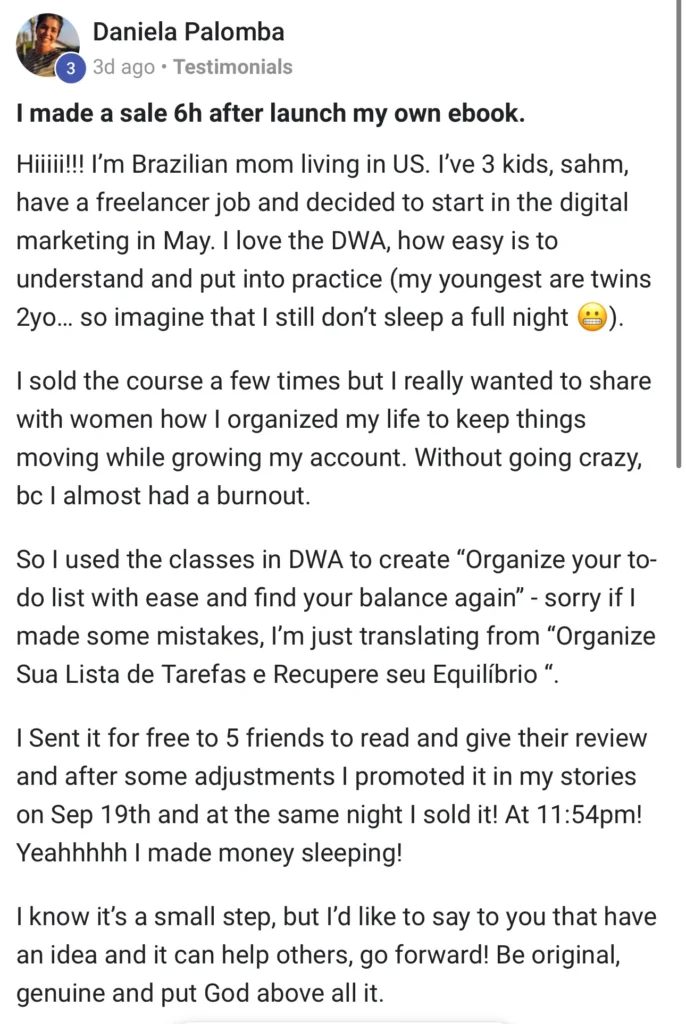
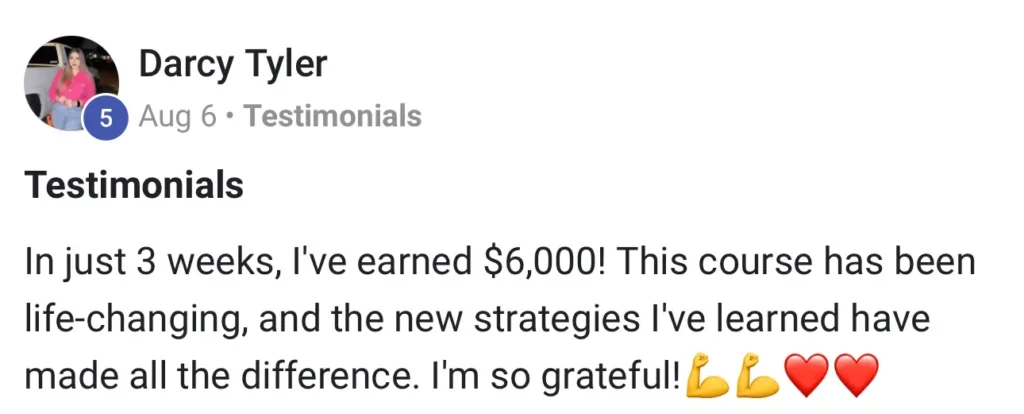
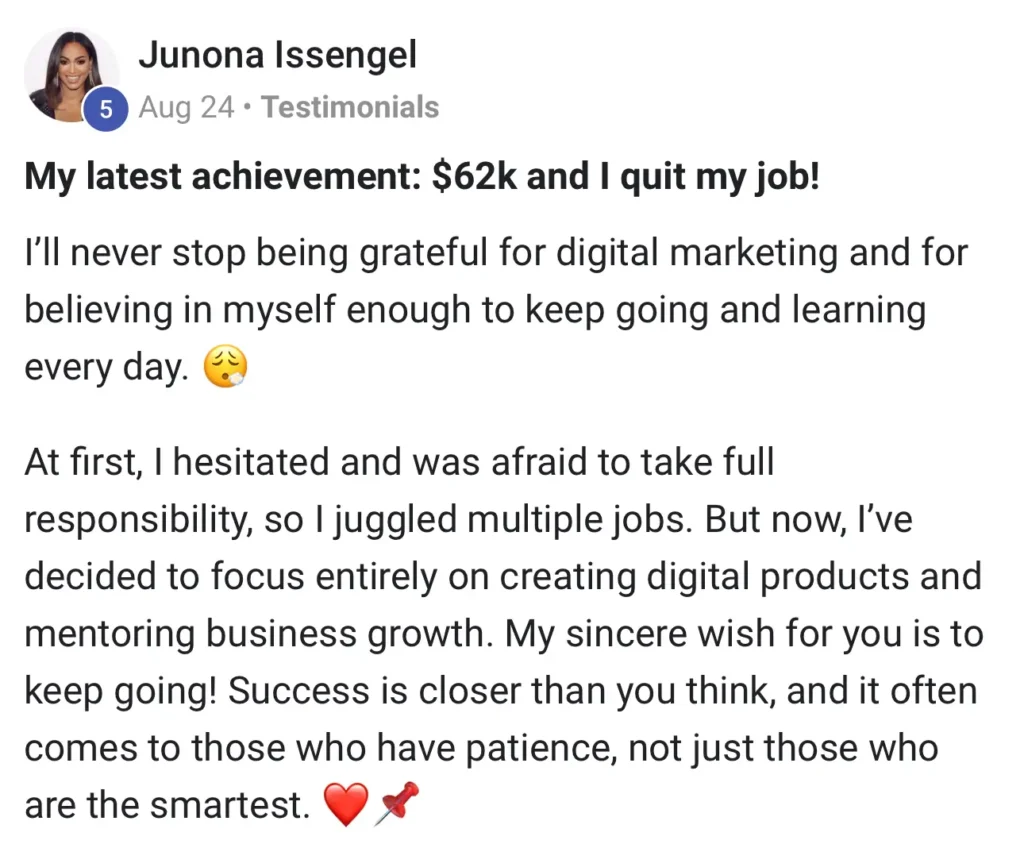
Table of Contents
Key Takeaways
Etsy connects creators with 96 million buyers seeking unique items
Handmade and vintage goods outperform mass produced products
Shop setup takes under 30 minutes with the right preparation
Initial costs average $15 to $25 for basic store features
Success requires consistent branding and customer engagement
Introduction to Selling on Etsy
Ever wonder why people pay $50 for a mug that says “Coffee Fueled Superhero”?
That’s Etsy magic.
This platform isn’t just a marketplace.
It’s where passion projects become paychecks.
With 90 million buyers hunting for personality packed items, your glue gun masterpieces could be someone’s prized possession.
Overview of Etsy as a Marketplace
Think of Etsy as the cool flea market of the internet.
Unlike Amazon’s warehouse vibe, 83% of shoppers come here specifically for products with soul.
The numbers don’t lie:
| Platform | Average Order Value | Return Customers |
|---|---|---|
| Etsy | $46 | 62% |
| Amazon | $35 | 34% |
Why the difference?
Etsy’s algorithm favors shops telling authentic stories.
One seller told me:
“My crochet patterns sell better when I share photos of my rescue dog ‘helping’ with yarn.”
Why Handmade and Vintage Items Stand Out
Mass produced goods get lost here.
What thrives?
Items with fingerprints (literal or metaphorical).
Top performing categories include:
- Personalized jewelry (birthstone necklaces outsell generic 3:1)
- Upcycled furniture (vintage dresser sales up 140% since 2022)
- Niche craft supplies (glitter addicts are REAL)
Etsy’s secret sauce?
Buyers willingly pay 20 to 30% premiums for products that feel special.
Your business isn’t just selling.
It’s creating mini art experiences that fit in mailboxes.
Getting Started: Creating Your Etsy Account and Setting Up Your Shop
Let’s roll up our sleeves and build your store’s foundation.
The account setup process is simpler than assembling IKEA furniture, no Allen wrench required.
I’ve seen shops go from blank screen to “Open for Business” in 18 minutes flat.
Setting Up Your Account and Profile
Head to Etsy.com and click “Sign In” (even if you’re new).
You’ll need an email and password.
Make it stronger than “password123”.
Verify your email faster than you can say “craft fair”, then click the profile icon.
Your public profile matters more than you think.
Add a photo showing your face or brand mascot.
One seller doubled conversions using a pic of her holding her bestselling ceramic mugs.
Share your location and a 2 sentence bio that answers:
Why do you create?
What makes your shop special?
Choosing the Right Shop Name
This decision haunts more creators than glitter spills.
Your shop name needs to be:
- Memorable (No “CraftsByUser_4892”)
- Search friendly (“VintageButtonBoutique” > “ButtonsRUs”)
- Available (check Etsy’s search bar first)
| Good Names | Why They Work | Bad Names |
|---|---|---|
| StitchedWithSass | Shows personality + product | SewingStuff4U |
| MidnightPotteryCo | Clear niche + professional | ClayMaster2024 |
Pro tip: Say potential names aloud.
If your friend giggles or asks “What does that mean?”, keep brainstorming.
Once you set shop details, you’re locked in.
No take backsies without starting over.
Researching Your Niche and Understanding Etsy’s Marketplace
Finding your sweet spot on Etsy is like discovering the perfect coffee blend, unique to your taste but irresistible to others.
I once helped a client selling custom cat portraits outearn generic pet stores by targeting “whisker art enthusiasts”.
Here’s how to uncover your golden opportunity.
Identifying Your Niche and Product Gaps
Start with what makes your hands itch to create.
Love making products?
Great!
Now check if others will pay for them.
Search Etsy for your idea + “best seller”.
If you see 10+ shops with 1,000 sales each, dig deeper.
| Market Type | Signs | Opportunities | ||
|---|---|---|---|---|
| Oversaturated | 100+ similar listings | Prices under $15 | Bundle items | Add personalization |
| Underserved | Few reviews | Generic descriptions | Fill specific needs | Charge 20% more |
One jewelry maker told me:
“Adding birth month flowers to my necklaces tripled my shop’s revenue in 3 months.”
Use Etsy’s search bar like a crystal ball.
Type “wedding” and see suggestions like “bridesmaid survival kits”, that’s demand talking.
Check completed listings for what actually sold, not just what’s posted.
Price smartly.
Materials + time × 2 = baseline.
Then compare to business rivals.
If everyone charges $40 for hand poured candles, don’t race to $35, explain why yours burn 30% longer.

a free beginner’s guide
DWA Sneak Peek
Learn the easiest and fastest way to start or exponentially grow your existing business.
Step by Step Guide on how to sell on etsy
Ready to transform your creative passion into a storefront?
Let’s build your digital shop counter together.
I’ve helped 200+ sellers nail this process.
The secret is treating your Etsy shop like a physical store.
Every detail matters, from your “Open” sign (listings) to your return policy (no one likes sticker shock).
Click your profile icon and hit “Sell online with Etsy”.
You’ll breeze through the starter questions faster than unwrapping a new glue stick.
Pro tip: When setting preferences, choose “International” for currency options.
35% of buyers shop from other countries.
Crafting Listings That Convert Browsers to Buyers
Your first product listing is like a handshake, make it firm and friendly.
Upload crisp photos showing items in use (think cozy blanket on a couch, not folded fabric).
One seller shared:
“Adding a video of my jewelry catching sunlight doubled my conversion rate overnight.”
| Complete Profile | Incomplete Profile | Result Difference |
|---|---|---|
| 10 photos + video | 3 blurry pics | 4x more sales |
| Detailed policies | Generic templates | 50% fewer disputes |
The Policy Playbook Every Seller Needs
Shipping and return rules aren’t just fine print, they’re trust builders.
Set clear timelines (“Ships in 3 days”) and consider free returns.
My rule?
Treat policies like a recipe: precise measurements prevent kitchen fires.
Organize your products into sections like “Best Sellers” or “Under $25”.
Etsy’s algorithm rewards shops that make browsing effortless.
Remember: 72% of buyers use filters, tag your listings like you’re labeling spice jars.
Hit “Publish” with confidence.
Your first sale notification will ding faster than a sewing machine at full throttle!
Crafting Compelling Product Listings and High Quality Photos
Your Etsy listing is your digital storefront window, messy displays get scrolled past.
I once saw a $200 necklace outsell $50 lookalikes because its photos made buyers feel like they were holding luxury.
Let’s make your products impossible to ignore.
Tips for Professional Product Photography
Smartphone cameras can work magic if you follow three rules: light, angles, context.
Natural light beats ring lights for handmade goods, try shooting near windows during “golden hour.”
One seller confessed:
“My ceramic mugs looked flat until I started using a white foam board as a reflector”.
| Do | Don’t |
|---|---|
| 5+ angles including close ups | Single blurry shot |
| Show scale (hand holding item) | Forced perspective tricks |
| 2,000px shortest side (72 PPI) | Low res Instagram crops |
Writing Descriptive Titles and Product Descriptions
Your title needs to whisper “CLICK ME” to both humans and algorithms.
Balance relevant keywords with personality:
- Bad: “Blue Earrings”
- Good: “Handmade Turquoise Dangle Earrings – Boho Beach Jewelry”
Descriptions should answer unasked questions.
For example:
- “These coasters absorb condensation instantly” (benefit)
- “Fits standard 11oz mugs” (specs)
- “Mom approved washable fabric” (reassurance)
Remember: Your product listing isn’t done until it makes someone say, “I need this!”
Test it on friends, if they don’t reach for their wallets, tweak the story.
Pricing Strategies, Fees, and Payment Setup on Etsy
Let’s talk numbers, the kind that won’t make your eyes glaze over.
Etsy’s fee structure works like those uninvited party guests who nibble your snacks but stick around for the good conversations.
Knowing their cut helps you price smarter, not harder.
Understanding Etsy Fees and Transaction Costs
Here’s the breakdown every seller needs tattooed on their craft table:
| Fee Type | Cost | Real-World Example |
|---|---|---|
| Listing | $0.20 per item | 100 products = $20 |
| Transaction | 6.5% | $50 sale → $3.25 |
| Payment Processing | 3% + $0.25 | $50 sale → $1.75 |
| Offsite Ads | 12-15% | Only charged if ad converts |
One jewelry maker shared:
“I nearly cried when I realized fees ate 15% of my first sale. Now I bake them into my prices upfront.”
Setting Competitive Prices for Your Products
Your pricing formula should look like this:
- Materials + labor = base cost
- Add 25% for fees and surprises
- Multiply by 2 for profit margin
Link your bank account through Etsy Payments.
It’s the fastest way to get paid.
Pro tip: Set up weekly deposits instead of daily.
Fewer transfer fees mean more coffee money for your late night crafting sessions.
Optimizing Your Etsy Shop for SEO and Search Results
Ever feel like your amazing creations are buried treasure in a sea of Etsy listings?
Let’s polish your map so customers can find their way to your shop.
SEO here isn’t about tech jargon.
It’s about speaking your buyers’ language.
Keyword Placement and Relevant Tags
Think of relevant keywords as your shop’s secret decoder ring.
Tools like eRank or Marmalead show what real humans search for, not just guesses.
One client selling custom bookmarks discovered people wanted “library themed wedding favors” and tripled her products’ visibility.
Use all 13 tags like puzzle pieces.
“Handmade leather journal” becomes:
- Gift for writers
- Travelers notebook
- Personalized stationery
But avoid robotic stuffing.
Would you say “boho blue earrings jewelry accessories” in real life?
Nope.
Neither should your listings.
Utilizing Etsy Ads and Offsite Promotions
Etsy Ads work like caffeine for your shop, great in controlled doses.
Start with $2 per day on your top 5 items.
My rule?
If a product earns double its ad spend, keep boosting it.
One candle maker turned $50 per month into 27 new customers through strategic bids.
Offsite Ads are your silent salespeople.
They showcase your products on Google and Instagram, only charging 12 to 15% when sales happen.
Perfect for shops clearing $10k per year.
Just make sure your profit margins can handle the “success fee”.
Remember: SEO isn’t set and forget.
Check your shop stats monthly.
If “unicorn socks” gets 100 searches but your listing’s on page 10?
Time to tweak those tags!
Real Life Results: Explore More DWA Testimonials
Discover how Digital Wealth Academy is changing lives.
Read authentic success stories and see the incredible results members are achieving with the DWA program.
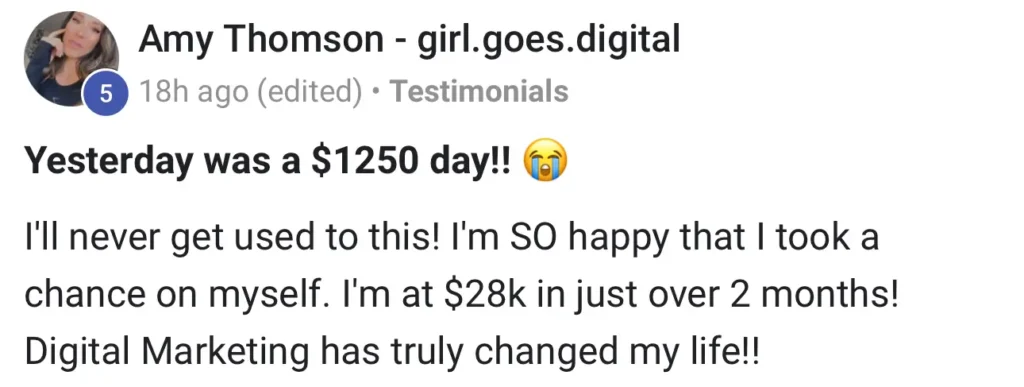
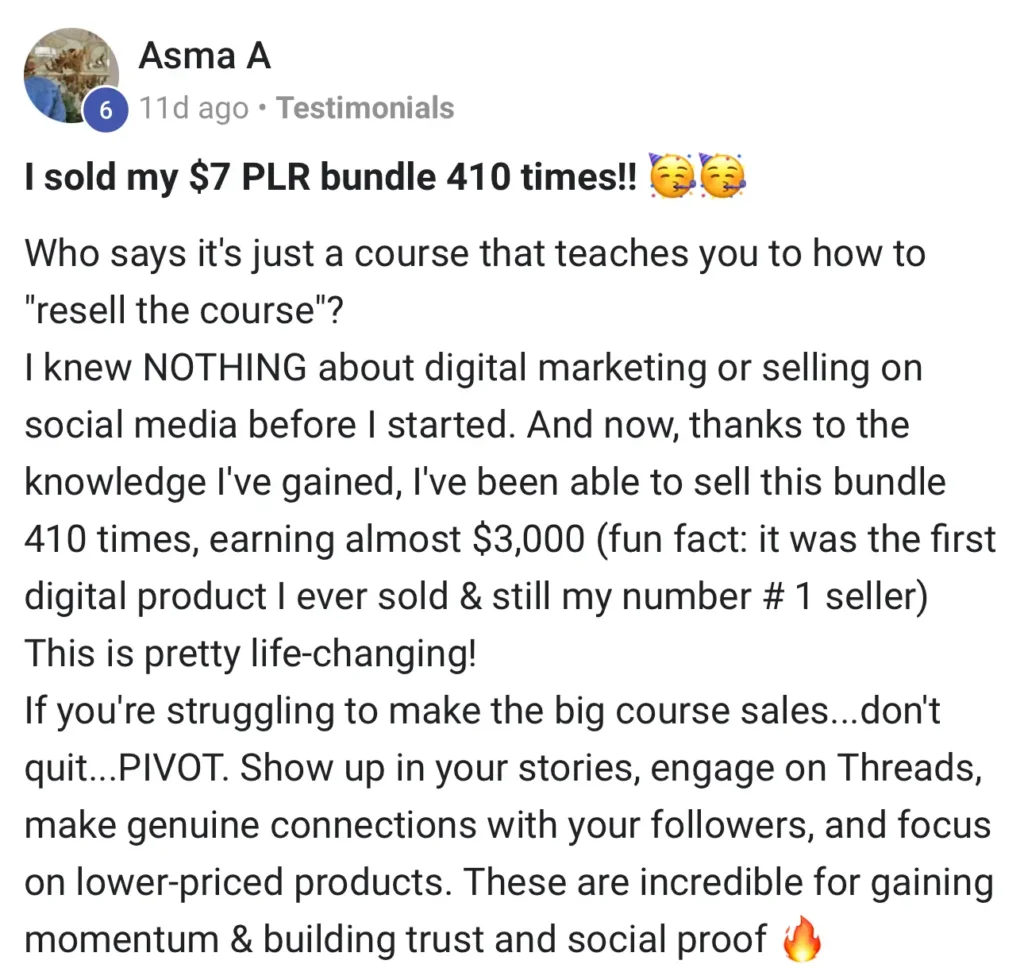
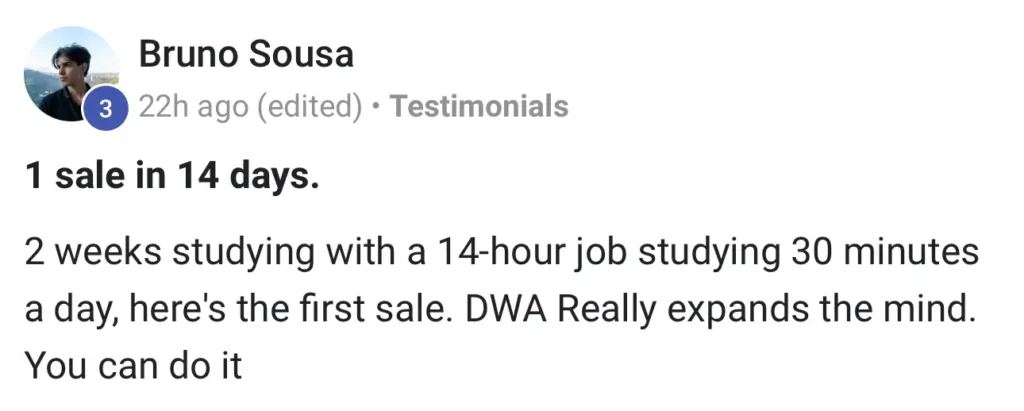
FAQ
What’s the real cost of selling on Etsy?
You’ll pay a 6.5% transaction fee + 3% + $0.25 payment processing fee per sale. Listings cost $0.20 each (they expire after 4 months). Pro tip: Bake these Etsy fees into your pricing upfront to avoid profit surprises.
How do I make my product listings actually get seen?
Stuff those relevant keywords like a Thanksgiving turkey! Use Etsy’s search bar for popular phrases, include location based terms (“handmade leather wallet Chicago”), and update tags seasonally. Bonus points for using all 13 tag slots.
Do I need a business license to open an Etsy store?
Most casual sellers don’t, but check your local laws. Etsy requires a valid ID, bank account, and credit card. If you’re moving serious volume, consider getting legit with licenses for tax purposes.
Why won’t Etsy let me set up payments?
Triple check your bank account details and ID verification. Common hiccups include mismatched names (your shop name vs. legal name) or unsupported banks. Still stuck? Their support team actually responds faster than my mom’s group texts.
Should I offer free shipping?
It’s the golden ticket for better search results. Either: 1) Bump prices to cover shipping costs, or 2) Set a minimum order amount. Test both. I’ve seen shops increase sales by 25% after switching to free shipping.
How do I handle Karens leaving bad reviews?
Kill ’em with kindness (publicly). Then slide into their DMs with solutions. Most buyers change reviews if you fix issues fast. Document everything and remember: one 3 star review won’t tank your 5 star shop.
Are Etsy Ads worth the cash?
Start small ($1 to 2 per day) and track conversions religiously. If your product listings already convert well organically, ads can supercharge sales. But if your photos look like 2008 iPhone pics? Fix that first before burning cash.

